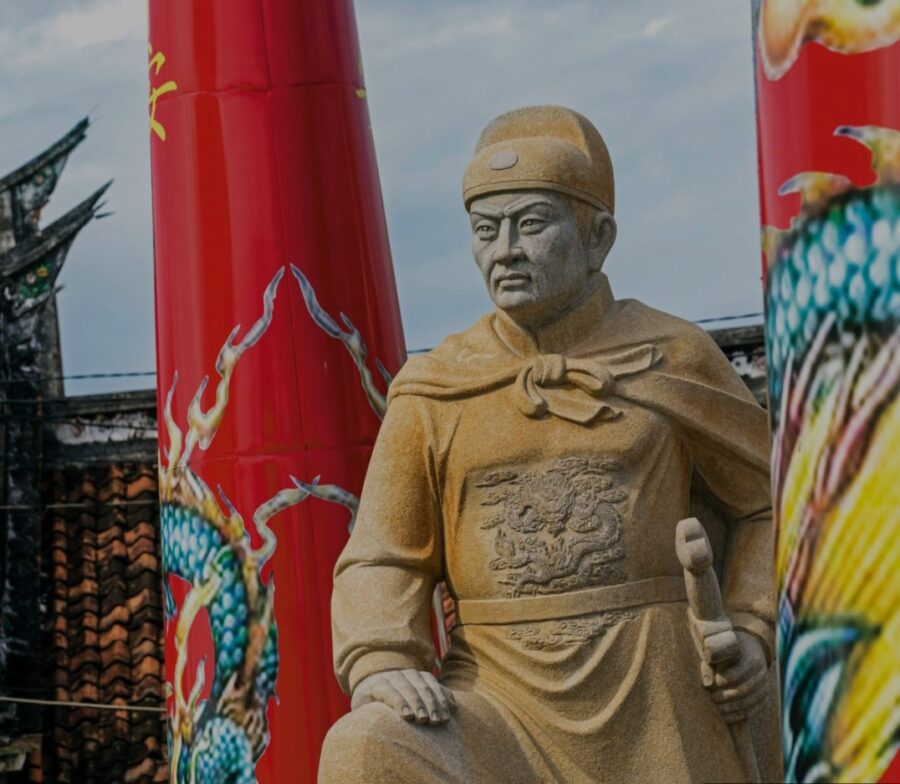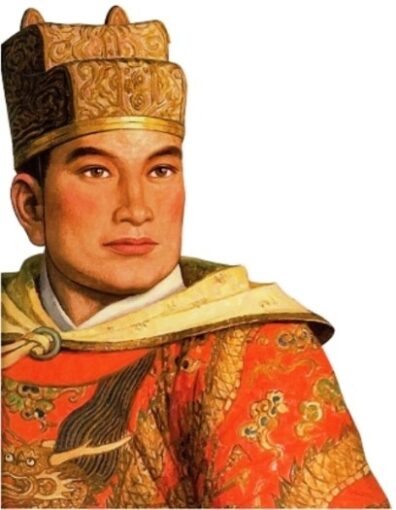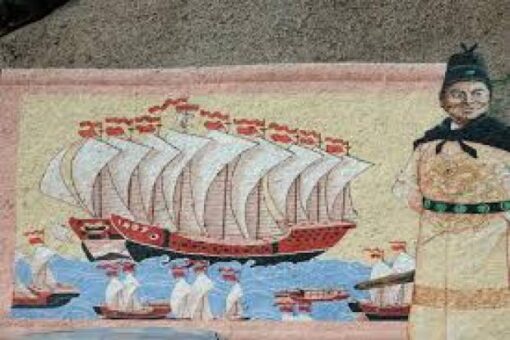
Here’s A Muslim Geographer You Should Know
We are all familiar with names of Western explorers like Marco Polo, Ferdinand Magellan, Vasco da Gama, Columbus and others who have put their names in the history of ocean and sea exploration.
When I was a little girl in primary and secondary school, my teachers told me about their important contributions and participation in building the “Great Western and World Civilization”.
They told us about Marco Polo and his adventures in China, Vasco da Gama and his success in establishing a sea route from Europe to India through Africa’s Cape of Good Hope, Columbus and how he discovered America etc. But they never told us about the eastern explorers who made history before the others did.
Names like Ibn Battuta, Ibn Majid, Shamsuddin Abu Abdullah al-Moqaddasi, Ibn Fudhlan, Ibn Jubayr, Abu Bakr the Second (King of Mali), Piri Reyes and many other Muslim explorers were never mentioned until I entered university and discovered how important Islam was (and still is) to the world civilization.
I discovered the beauty and the richness of our Islamic civilization with all those many Muslim figures who made history and left their own mark in every field in which they were specialized.
Each ethnic and racial group that embraced Islam made its contribution to the one Islamic civilization to which everyone belonged. One of the Eastern figures that attracted my attention in the world of sea travelers and explorers is the Muslim Admiral Zheng He.

Zheng He, the man who discovered America before Columbus did. He was born at the end of the 14th century, in a small town in the region of Yunnan to a Hui-family, which is a Muslim Chinese ethnic group.
His birth name was ‘Ma He’. In China they use “Ma” as a short name for “Muhammad”.
His family claimed to be a descendant of a Mongolian governor in Yunnan or from King Mohammed of Bukhara. Raised as a Muslim, Ma He studied the teachings of Islam and memorized the Quran at an early age. His father and his grandfather completed their pilgrimage to Makkah.
They had a great impact on his education and it’s under their influence that the young Ma He would develop an intense curiosity about the outside world. The travels his grandfather and father undertook would contribute a lot to his education.
When Ma He was 10 years old, the army of the Ming Dynasty captured him during their military raids in Yunnan.
They took him to Nanjing and there he did his military training. After that, they took him to Beijing to serve Zhu Di, the Prince of Yan and the 4th son of the founding emperor of the Ming Dynasty.
Rising Star
Thanks to his abilities, loyalty, honesty, integrity and brilliance, Ma He became the best friend and the personal bodyguard of the young prince.
It was during this time and period that Ma He’s intelligence, wisdom and leadership abilities became visible. After all the campaigns and battles he led and fought on the side of Prince Zhu Di during four years, Ma He became the most powerful military commander in China.
When Prince Zhu Di became the new Emperor of the Ming Dynasty, he decided to reward all the officers and officials who had supported him. Ma He was one of them.

Becoming Zheng He
In 1404, the new Emperor awarded him as “the supreme command of the Imperial Household Agency”. Zhu Di decided also to change the name of Ma and gave him his new title: Zheng. It was Zhu Di’s way to thank him for everything he did and as a symbol of the imperial honor. From that moment Ma He became ‘Zheng He’.
The political discussions he had with Zhu Di, the military experiences he undertook, his connections with the people of knowledge, trading with merchants and all the abilities he developed in his childhood will only open new doors and horizons to him: exploring the world.
The emperor chose him as the ideal commander for the great voyages westward. After he became the most powerful commander in China, he became China’s greatest maritime explorer. Admiral Zheng He, became his new title. Zhu Di held Zheng He responsible for all the maritime affairs.
Zheng He prepared everything very carefully before he accomplished his mission as an explorer. He made some detailed studies about existing naval charts, astro navigation, eastern and western calendars, astronomy, geography, marine sciences, piloting, shipbuilding and repair.
From 1405 until 1433, Zheng He led 7 great maritime expeditions. He crossed the great oceans and seas several times. From the South China Sea to the east coast of Africa, passing through the Indian Ocean, the Persian Gulf and the Red Sea.

Touring World
He visited more than 30 Asian and African countries and learned a lot about their cultures and beliefs. It is possible that during one of his expeditions he completed his pilgrimage to Makkah. Zheng He was not the only Muslim on those expeditions. Advisors and translators who traveled with him, like Ma Huan were just like him, Chinese Muslims.
The first fleet Zheng He commanded included 27.870 men on 317 ships, including sailors, clerks, interpreters, soldiers, artisans, doctors and meteorologists. He was on his way to Vietnam, Sri Lanka, the Philippines, Java and Sumatra.
The ships that Zengh He commanded were up to 137.2 m long and 186 across, capable of carrying more than thousand passengers as well as a massive amount of cargo with products like porcelain, gold and silverware, cotton, copper and silk goods.
Those ships were many times the size of Columbus’s ships that passed across the Atlantic and several times larger than any other wooden ship ever recorded in history.
The most spectacular and important voyage of Zheng He was his 4th one with his 30,000 men, which was to Arabia (through Hormuz, Aden and the Red Sea). When he arrived in Arabia, 19 countries sent ambassadors to board Zheng He’s ships with gifts for Emperor Zhu Di.
After his trip to Arabia, he travelled to the east coast of Africa and possibly reached Mozambique.
After the death of Emperor Zhu Di in 1424, the new Emperor (Hongxi), ceased immediately all the maritime expeditions. China became a self-isolated country during the coming 100 years.
New Phase & Discovering New World
Zheng He was appointed as port commander in Nanking and received orders to disband his army. Zheng He chose with the support of Xuande, who had succeeded Hongxi, to bring life again to his expeditions.
On his 7th and last travel in 1433 (when he became 60 years old) , Zheng He revisited the Persian Gulf, the Red Sea and Africa and died in India on his way back.
It is also proven that Zheng He discovered America and Australia in one of his trips before Columbus did. And he also reached the east coast of Africa and sailed from the Cape of Good Hope to the Cape Verde Islands before Marco Polo did.
Every time Zheng He reached a country, he sailed back to China with exotic products such as ivory, camels, gold and other goods.

All those expeditions sent one message to the world: China is an economic and political superpower. But Zheng He added another important thing in his travels: calling people to Islam. With his muslim advisors, Zheng He invited the local people to embrace islam wherever they traveled to.
Spread of Islamic Message
In the Indonesian islands of Java, Sumatra, Borneo and others, small Muslim communities were already installed before they met Zheng He.
The spread of the Islamic message in Southeast Asia began a few 100 years earlier thanks to the Arab and Indian merchants. Zheng He actively supported the continuous growth of Islam in these areas.
To facilitate the spread of Islam quickly in Southeast Asia, Zheng He established Chinese Muslim communities in Palembang, Java, the Malay Peninsula and the Philippines. Their task was to spread islam around the area to build mosques and to provide other social services the local Muslim community would need.
After his death, the Chinese Muslims in Southeast Asia continued Zheng He’s work in different ways. This brought more people to Islam in Southeast Asia and strengthened the growing Muslim community in Indonesia, Malaysia, the Philippines and this complete Southeastern Asian area.
Conclusion: Zheng He, China’s greatest maritime explorer, isn’t only the pride of the Chinese history, but also a very unique hero in the history of our Islamic civilization.
We must not forget our heroes!
Source: Muslim.com

